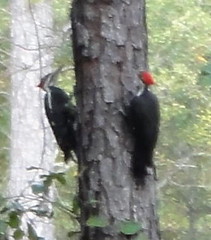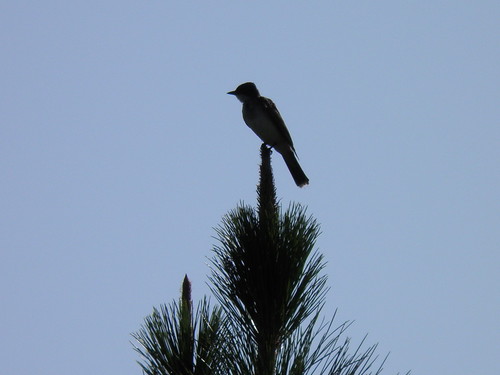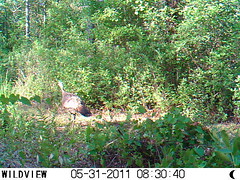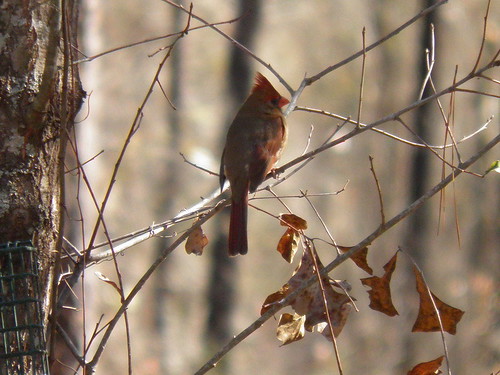
|

|
|
Pileated WoodPecker
(Dryocopus pileatus) Flying: Dark trailing wing edge Perched: Small white patch Length: 16-19 in. Wing span: 26-30 in. |
Ivory-billed Woodpecker
(Campephilus principalis) Flying: White trailing wing edge Perched: Large white patch Length: 18-20 in. Wing span: 30-33 in. |
| Above illustrations by N. John Schmitt © Cornell Lab of Ornithology | |
You can clearly see when this bird flew overhead it had a black trailing wing edge: Continue reading








